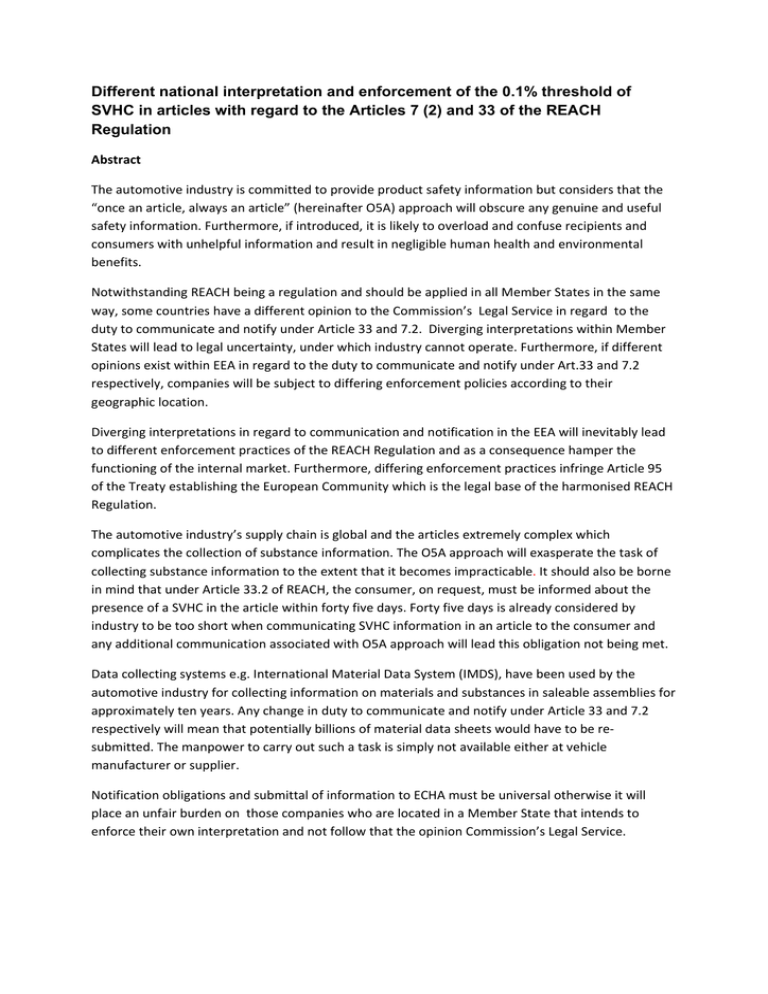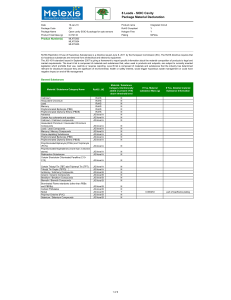Different national interpretation and enforcement of the 0.1
advertisement

Different national interpretation and enforcement of the 0.1% threshold of SVHC in articles with regard to the Articles 7 (2) and 33 of the REACH Regulation Abstract The automotive industry is committed to provide product safety information but considers that the “once an article, always an article” (hereinafter O5A) approach will obscure any genuine and useful safety information. Furthermore, if introduced, it is likely to overload and confuse recipients and consumers with unhelpful information and result in negligible human health and environmental benefits. Notwithstanding REACH being a regulation and should be applied in all Member States in the same way, some countries have a different opinion to the Commission’s Legal Service in regard to the duty to communicate and notify under Article 33 and 7.2. Diverging interpretations within Member States will lead to legal uncertainty, under which industry cannot operate. Furthermore, if different opinions exist within EEA in regard to the duty to communicate and notify under Art.33 and 7.2 respectively, companies will be subject to differing enforcement policies according to their geographic location. Diverging interpretations in regard to communication and notification in the EEA will inevitably lead to different enforcement practices of the REACH Regulation and as a consequence hamper the functioning of the internal market. Furthermore, differing enforcement practices infringe Article 95 of the Treaty establishing the European Community which is the legal base of the harmonised REACH Regulation. The automotive industry’s supply chain is global and the articles extremely complex which complicates the collection of substance information. The O5A approach will exasperate the task of collecting substance information to the extent that it becomes impracticable. It should also be borne in mind that under Article 33.2 of REACH, the consumer, on request, must be informed about the presence of a SVHC in the article within forty five days. Forty five days is already considered by industry to be too short when communicating SVHC information in an article to the consumer and any additional communication associated with O5A approach will lead this obligation not being met. Data collecting systems e.g. International Material Data System (IMDS), have been used by the automotive industry for collecting information on materials and substances in saleable assemblies for approximately ten years. Any change in duty to communicate and notify under Article 33 and 7.2 respectively will mean that potentially billions of material data sheets would have to be re‐ submitted. The manpower to carry out such a task is simply not available either at vehicle manufacturer or supplier. Notification obligations and submittal of information to ECHA must be universal otherwise it will place an unfair burden on those companies who are located in a Member State that intends to enforce their own interpretation and not follow that the opinion Commission’s Legal Service.

